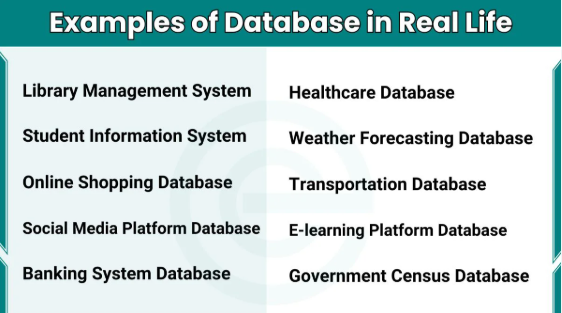
What is a Database? | Explained with Real-Life Examples
Whether you’re shopping online, checking your grades, or streaming music—databases are working behind the scenes.
But what exactly is a database? Why is it important? And how is it different from a spreadsheet or a filing cabinet?
In this first episode of our series on data and databases, we’ll explain what a database is using real-life examples, and why it’s the backbone of modern technology.
What Is a Database? (Simple Definition)
A database is an organized collection of data that can be easily accessed, managed, and updated.
It’s like a digital filing system where information is stored in a structured way so that computers—and people—can quickly find what they need.
In simple terms:
A database is where apps and websites store and retrieve information efficiently.
Real-Life Analogy
Imagine a library:
- The books are the data
- The library catalog system is the database
- You search by author, title, or category—that’s how databases organize data for easy access
Types of Data Stored in Databases
Databases can store:
- Text (names, emails, messages)
- Numbers (prices, quantities, marks)
- Dates (order dates, birth dates)
- Files (images, PDFs, videos)
- Links between pieces of data (e.g., which student is enrolled in which course)
Real-Life Examples of Databases
Let’s look at how databases are used around you every day:
- Library Catalog
- Stores: Book titles, authors, genres, availability
- You search a book → The system pulls results from the library database
- E-Commerce Websites (e.g., Amazon)
- Stores: Product listings, prices, user accounts, order history
- You add something to your cart → It updates in the user and product database
- School Management System
- Stores: Student records, attendance, grades, subjects
- A teacher enters marks → The student’s data is updated in the school database
Database vs Spreadsheet
| Spreadsheet | Database |
| Good for small data | Good for large, complex data |
| Limited user access | Multi-user, secure access |
| Manual updates | Automated, query-based updates |
| Example: Excel | Example: MySQL, PostgreSQL, MongoDB |
Databases are more powerful and structured—ideal for apps and large organizations.
How Databases Work (Simplified)
- Store Data: Data is saved in tables (like Excel sheets with rows and columns)
- Query Data: Use a language like SQL to ask questions (e.g., “Show all students with grades above 90”)
- Update Data: Add, edit, or delete information
- Secure Data: Only authorized users can access or change it
Why Should You Learn About Databases?
Even basic knowledge of databases is useful for:
- Web developers
- Data analysts
- Business managers
- Students working on IT projects
Coming up: Episode 2 – Types of Databases (Relational, NoSQL, Cloud)


